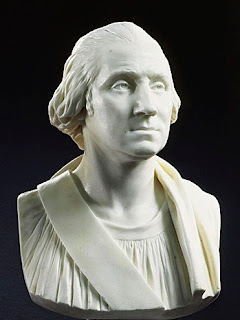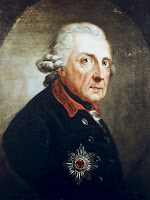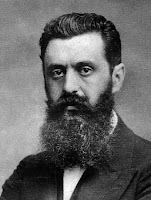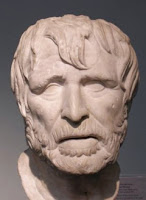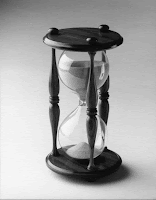Friday, May 11, 2012
What was The Protestant Reformation?
The Protestant Reformation changed religious attitudes
Around 1500 a number of northern humanists were suggesting that the Church had lost sight of the spiritual mission proclaimed by Jesus himself. Instead of setting an example of moral leadership, they said, popes were becoming political leaders and warriors. Instead of encouraging inner piety, priests were concerned about the details of ceremonies. And the Church as a whole, they said, seemed more interested in its income than in salvation. What the northern humanists were seeking was a new emphasis on personal faith and spirituality. When their message went unheard in the Church, a new generation of reformers urged believers who were unhappy with official religion to join a new church. This religious revolution, which split the Church in Western Europe, is called the Reformation.
George Herbert
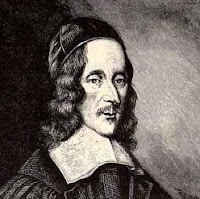 |
| George Herbert (1593-1633) |
Herbert was born into a noble Welsh family. Ordained about 1626, he gave up a career at court and at Cambridge University to become a devoted parish priest, from 1630 to his death.
Thursday, May 10, 2012
Jean Antoine Houdon
Jean Antoine Houdon (1740-1828) was the greatest French sculptor of his day, was born at Versailles. He began work in his art at a very early age, and at twenty won the coveted Prix de Rome. Houdon studied in Rome for ten years, at the end of which he returned to Paris as instructor at the School of Fine Arts. Among his finest works are the busts of Catherine II, Moliere, Rousseau, Voltaire, Buffon, Lafayette, Napoleon, Franklin and Washington. To make the latter, which is now in the state capitol of Richmond, Va., Houdon accompanied Franklin to the United States in 1785. It is considered the finest likeness of Washington extant.
Bust of Washington (Houdon)
Did you know that...
Did you know that...
as many as 250,000 new nerve cells can be formed each minute during a baby's development inside its mother? By the time the baby is born, the brain will have almost all the nerve cells, or neurons, it will ever nave. However, a child's brain continúes to increase in size after birth as other brain cells, called glia, grow around the neurons, insulating them and carrying out various "housekeeping" functions in the brain. A baby is also born with trillions of connections, or synapses, be-tween neurons. As the child learns various skills, many of these synapses are stimulated and become permanent connections.
Christopher Columbus
Even before Vasco da Gama brought wealth to Portugal, Spain also had become interested in the search for new trade routes. Its rulers, Ferdinand and Isabella, decided to finance a voyage by Christopher Columbus, an Italian navigator. Thinking that the world was much smaller than it actually is, Columbus believed he could reach India quickly and easily by sailing westward.
In August 1492 Columbus set sail with three small ships from Spain and crossed the Atlantic. His small fleet landed in October on a tiny island in the Caribbean Sea. He named the island San Salvador. After visiting several other islands, Columbus returned triumphantly to Spain in the spring of 1493 to report his discoveries. He believed the islands to be off the coast of India and therefore called their inhabitants "Indians." Actually, he had discovered the islands later known as the West Indies. Although Columbus made three more voyages between 1493 and 1504, he believed until his death that the lands he had found were part of Asia.
Romance languages
A Romance language is any of several languages that developed from Latin. The Romance tongues include French, Italian, Spanish, Catalan, Portuguese, and Romanian. Other Romance, or Romanic, languages are Sardinian and Rhaeto-Romance (the general name for a group of languages, including Romansh, spoken in certain parts of Switzerland, the Tyrol, and Friuli).
The Romance group also includes Provençal, the language spoken in southern France. Provençal was the language of the troubadours, who were the poets of the 1100's. The lyrics of more than 400 Provençal poets have come down to us. Most of their poems were love lyrics, but some had moral, religious, or political themes written to popular melodies. The use of Provençal as a literary medium began to decline soon after A. D. 1200.
Romance languages grew up because Rome sent colonists to settle the countries it had conquered. The soldiers, tradesmen, and farmers who colonized these conquered countries took their language with them, but it was not the Latin of the classics studied in school today. It was popular, or vulgar, Latin, the everyday speech of ordinary people. This popular Latin often adopted words or features of pronunciation from the language of the conquered country. For example, the Latin word for hundred, centum, became cent in French, ciento in Spanish, and cento in Italian. The varieties of popular Latin formed in this way eventually developed into separate languages.
Wednesday, May 9, 2012
Why were some of the early bridges in the United States covered?
Covered bridges once dotted the American countryside from the Atlantic Coast to the Ohio River. The bridges looked like square tunnels with peaked roofs. Some people claim that the bridges were cov¬ered so that horses would not be frightened by the water underneath. Others say that they were built as a shelter for travelers in faad weather. Actually the coverings were designed to protect the wooden framework and fiooring of the bridges and keep them from rotting. The pitched roofs, which shed snow, also reduced the amount of heavy snow that collected on the bridges. Wooden bridges became obsolete as traffic loads increased and modern trucks grew in size. Today only a few are still stand-ing. Many people work to preserve the remaining covered bridges.
Realism and Perspective in Giotto's art
The changes in painting from medieval to modern times can be seen in the work of the great early Renaissance artist Giotto. In this painting the angel of God tells St. Anne that she will have a child, Mary, who will be the mother of Jesus. There is a three-dimensional quality in the lighted room, in the rooftops that recede into the dark, and in the faces of the women and the angel. Thus Giotto makes us feel the scene is an actual event rather than a symbolic one.
Giotto was an architect as well as an artist. His interest in architectural detail and perspective heighten the realism of his work. Like other Renaissance artists, he was interested in showing a building or a landscape as it appeared through a person's own eyes. Later Renais¬sance painters developed perspective mathematically and were able to portray distances with great accuracy.
Giotto was an architect as well as an artist. His interest in architectural detail and perspective heighten the realism of his work. Like other Renaissance artists, he was interested in showing a building or a landscape as it appeared through a person's own eyes. Later Renais¬sance painters developed perspective mathematically and were able to portray distances with great accuracy.
What is Horsepower?
Horsepower is literally the power of a horse or the rate at which it can perform work. With the invention of the steam-engine, it became necessary for Watt to express its power in terms of the horse, and the standard he established has been generally adopted. So the horsepower became equivalent to the raising of thirty-three thousand pounds one foot high in one min¬ute, or to the doing of work at the rate of thirty-three thousand foot pounds per min¬ute. This somewhat exceeds the activity of an average horse except for limited periods. The determination of the horsepower of a steam-engine is a comparatively simple matter. Multiply together the area of the piston in square inches, the length of the stroke in feet, the mean effective pressure of the steam in pounds per square inch, and the number of strokes per minute, and di¬vide the product by thirty-three thousand. It is customary to subtract ten percent for friction.
The unit of power in metric units is the watt, named from the inventor, and is equal to doing work at the rate of one joule, or ten million ergs, per second. The kilowatt is of more practical size, and equals one and one-third horsepower.
The unit of power in metric units is the watt, named from the inventor, and is equal to doing work at the rate of one joule, or ten million ergs, per second. The kilowatt is of more practical size, and equals one and one-third horsepower.
Tuesday, May 8, 2012
Is it true that we use only 10 percent of our brains?
No. This is a common misconception. Although different parts of the brain are more or less active during different activities, there is no evidence that we use only a small portion of our brains. Damage to a small area of the brain can cause devastating effects, such as amnesia, paralysis, or loss of language. This suggests that every part of the brain serves an important function, upon which other parts of the brain depend.
On the other hand, some people— especially children—can recover after suffering major damage to the brain or even losing part of it. Such remarkable recoveries do not suggest that we need only a fraction of our brain, however. Rather, they illustrate the tremendous capacity of the brain to "rewire" itself: Cells in the remaining parts of the brain form new connections and take over the functions of those parts that were removed.
On the other hand, some people— especially children—can recover after suffering major damage to the brain or even losing part of it. Such remarkable recoveries do not suggest that we need only a fraction of our brain, however. Rather, they illustrate the tremendous capacity of the brain to "rewire" itself: Cells in the remaining parts of the brain form new connections and take over the functions of those parts that were removed.
Frederick the Great
Frederick William I had a real worry as he nearer the end of his life. His son had little interest in either military life or government service. Instead, he spent his time writing poetry, playing the flute, and reading philosophy. The king used the harshest methods, even imprisonment to force his heir to be more nearly the son he desired.
As it turned out, Frederick William's son proved to be an even stronger ruler than his father. He turned out to be one of Prussia's great¬est military and political leaders and is known Frederick the Great.
Frederick William's son took the throne of Prussia as Frederick II in 1740, the same year in which Maria Theresa became ruler of Austria. He was a skilled administrator, who instituted social reforms and began work on a Prussian law code. Like his grandfather, he admired French culture He also wrote several books, including a history of Brandenburg and a book on the duties of rulers.
As it turned out, Frederick William's son proved to be an even stronger ruler than his father. He turned out to be one of Prussia's great¬est military and political leaders and is known Frederick the Great.
Frederick William's son took the throne of Prussia as Frederick II in 1740, the same year in which Maria Theresa became ruler of Austria. He was a skilled administrator, who instituted social reforms and began work on a Prussian law code. Like his grandfather, he admired French culture He also wrote several books, including a history of Brandenburg and a book on the duties of rulers.
Victor Herbert
Victor Herbert (1859-1924) was an American composer and conductor, is often called "the prince of operetta." One of his most famous operettas is Babes in Toyland (1903), which was based on Mother Goose and fairyland characters. "March of the Toys" and "Toy¬land" are well-loved numbers in this operetta. He also wrote Mlle. Modiste (1905), which includes the popular song "Kiss Me Again." Naughty Marietta (1910), one of the most tuneful of his operettas, in¬cludes such songs as "Ah! Sweet Mystery of Life," "I'm Falling in Love with Someone," "Italian Street Song," and " 'Neath the Southern Moon."
Herbert was born on Feb. 1, 1859, in Dublin, Ireland, of a musical family. He studied the cello in Ger¬many, and played in leading European orchestras. In 1886, he settled in New York City, where he played cello in the Metropolitan Opera Company Orchestra. In 1893, Herbert followed Patrick S. Gilmore as bandmaster of the Twenty-second Regiment Band. He wrote his first operetta, Prince Ananias, in 1894. It was not a great success, but The Wizard of the Nile, a year later, proved a major success.
Read more »
Herbert was born on Feb. 1, 1859, in Dublin, Ireland, of a musical family. He studied the cello in Ger¬many, and played in leading European orchestras. In 1886, he settled in New York City, where he played cello in the Metropolitan Opera Company Orchestra. In 1893, Herbert followed Patrick S. Gilmore as bandmaster of the Twenty-second Regiment Band. He wrote his first operetta, Prince Ananias, in 1894. It was not a great success, but The Wizard of the Nile, a year later, proved a major success.
Read more »
Monday, May 7, 2012
Did you know that . . .
Some 650 muscles cover the body's skeleton? Muscles do more than shape and define the contours of our bodies. They are responsible for all of the body's movements. Muscles are attached to bones by tough, hard tissue called tendons. In response to instructions from the brain, muscles contract and pull on the bones and movement occurs. Usually skeletal muscles work in groups. Even aseemingly simple task such as taking one step involves about 200 muscles! Some muscles lift and move your leg forward, while others in the back, chest, and abdomen help keep you from losing your balance during the motion.
Leather
Of all the ancient industries that of the manufacture of leather is one of the most interesting on account of the convertibility of an easily descomposed substance into one which resists putrefaction. The manufacture of leather is as old as history itself. In China the manufacture and use of leather was known before the Christian era, and in Egypt leather has been found in mausoleums of the ancients, showing us that rations in the remote ages of the past were practised in the art and left slight traces of their high civilization to be admired today. The Persians and Babylonians passed the art over the Greeks and Romans and so down through the different medieval nations to us. The Amer¬ican Indians were also well versed in the art of making leather. Although their method of tanning was entirely different from that of the ancient races, the fact remains that they also discovered a way of treating the skins of animals in such a way as to prevent the putrefaction of animal tissues.
Money in history
In early times any object that everyone accepted as valuable could serve as money. The Romans, for example, paid their soldiers with what was then a prized commodity, salt. From this custom we get the phrase, "worth ore's salt." Other items that have been used as money include shells, tobacco, feathers, and whale teeth.
Probably the first money made specifically as a medium of exchange appeared in China during the Shang dynasty. Because farmers often had traded spades and knives for other goods, this ancient money was shaped like spades.
Increasingly, rare metals, especially gold and silver, came to be used as money. They were fashioned into coins, which could be carried easily. Governments jealously guarded the right to make coins and to establish their value. Often, however, government officials would clip pieces off coins. Then they would melt these down to make more coins so that they could buy more. During the 1500's this process brought on inflation and was stopped only when milled, or grooved, edges were put on coins. This enabled people to see at once if the coins had been clipped.
About this time, too, paper money became more common. The Chinese, the first to use both paper and movable type, were also the first to use paper money, about the year 1060 A. D. Paper money was even more convenient than coins and became especially useful as long-distance trade grew increasingly important.
Probably the first money made specifically as a medium of exchange appeared in China during the Shang dynasty. Because farmers often had traded spades and knives for other goods, this ancient money was shaped like spades.
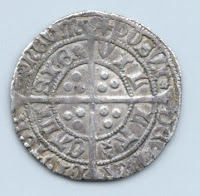 |
| coin |
About this time, too, paper money became more common. The Chinese, the first to use both paper and movable type, were also the first to use paper money, about the year 1060 A. D. Paper money was even more convenient than coins and became especially useful as long-distance trade grew increasingly important.
Sunday, May 6, 2012
Who were the Hesperides?
In Greek mythology, the Hesperides were the daughters of Atlas and Hesperus (Evening). They lived at the western end of the world. They guarded the golden apples which Gaea (Earth) gave to Hera when she married Zeus. A sleepless dragon helped them. One of Hercules' labors was to steal these apples.
Hesperides
Iron
Iron is a hard, heavy, well known metal. Pure iron is silvery-white in color, but it is seldom seen. Wrought iron is the purest commercial form; yet piano strings, the purest wrought iron in the market, contain three pounds to the thousand of carbon and other elements. When in the presence of a magnet, or when placed with-in a coil through which an electric current is passing, soft iron becomes magnetic. Iron remains unchanged in dry air, but rusts —unites with oxygen—in moist air.
Iron is the most useful of all metals, and of all metals it is the most widely distributed in nature. It forms a twentieth part of the world's crust. It is essential to life of all sorts. It is found in the green chlorophyll of plants and in the blood of ani¬mals. It occurs in meteorites. The color spectrum shows that iron is present in the Sun. There is an iron mountain near Durango, Mexico. It is a projecting back-bone or dike of solid iron ore,—a huge mass one mile long, a third of a mile wide, and 450 to 650 feet high. Similar hills in Missouri are known as Iron Mountain and Pilot Knob.
Iron is the most useful of all metals, and of all metals it is the most widely distributed in nature. It forms a twentieth part of the world's crust. It is essential to life of all sorts. It is found in the green chlorophyll of plants and in the blood of ani¬mals. It occurs in meteorites. The color spectrum shows that iron is present in the Sun. There is an iron mountain near Durango, Mexico. It is a projecting back-bone or dike of solid iron ore,—a huge mass one mile long, a third of a mile wide, and 450 to 650 feet high. Similar hills in Missouri are known as Iron Mountain and Pilot Knob.
Iron meteorite
Saturday, May 5, 2012
What was the Fries Rebellion?
The Fries Rebellion was an uprising in eastern Pennsylvania in 1799, led by John Fries (1764-1825). By act of July 14, 1798, Congress imposed a direct tax of $2,000,000, which was to be equitably apportioned among the various states and which was laid upon all dwelling houses and lands, and on slaves between the ages of 12 and 50. The value of the dwelling houses was to be determined on the basis of the size and number of Windows in these houses, and an impression thus got abroad that citizens who owned houses were being taxed for having Windows, the tax thus coming to be known in some communities as a "window tax." In the eastern counties of Pennsylvania (Northampton, Bucks, Montgomery, Lehigh and Berks), the large German element vigorously opposed the tax, and under the leadership of Fries, resisted by force (March, 1799) the Federal officers sent to measure Windows preparatory to assessing the owners of dwelling houses.
Riots soon broke out; some 30 of the rioters were arrested; and at Bethlehem these arrested rioters were rescued by their associates led by Fries. President Adams issued a proclamation against the rioters, troops were called out, and the disturbances were quickly suppressed. Fries was arrested, was tried on a charge of treason—the first trial of the sort in the history of the United States—and was convicted (1799). A new trial, however, was granted, but in the following year Fries was again convicted and was sentenced to the gallows. It was partly for the high-handed manner in which Judge Chase conducted this trial that he was impeached by the House and tried before the Senate. Fries was pardoned by President Adams, and subsequently became a prosperous dealer in tinware in the city of Philadelphia.
Friday, May 4, 2012
Who was Theodor Herzl?
Theodor Herzl (1860-1904) was an Austrian journalist and playwright who founded the Zionist movement. The aim of this movement was to set up a Jewish national home in Palestine. Herzl was born in Budapest, Hungary, and studied law at the University of Vienna.
The growing problem of anti-Jewish feeling in Europe, increased by the Dreyfus case in France, attracted Herzl's attention. He saw that European Jews had failed to gain social equality even when they had become politically free. So Herzl got the idea of gathering the scattered Jews into a country and a nation of their own. His motives were economic and social, rather than religious. Herzl's Jewish State, pub¬lished in 1896, attracted many persons to this cause.
Max Nordau and Israel Zangwill were among them. Herzl kept up contact with the leaders of many nations. In 1897, he presided over the first Zionist congress in Basel, Switzerland. In 1901, Great Britain offered the Jewish people land in British East Africa. Worry about the dispute over this offer injured Herzl's health and hastened his death.
The growing problem of anti-Jewish feeling in Europe, increased by the Dreyfus case in France, attracted Herzl's attention. He saw that European Jews had failed to gain social equality even when they had become politically free. So Herzl got the idea of gathering the scattered Jews into a country and a nation of their own. His motives were economic and social, rather than religious. Herzl's Jewish State, pub¬lished in 1896, attracted many persons to this cause.
Max Nordau and Israel Zangwill were among them. Herzl kept up contact with the leaders of many nations. In 1897, he presided over the first Zionist congress in Basel, Switzerland. In 1901, Great Britain offered the Jewish people land in British East Africa. Worry about the dispute over this offer injured Herzl's health and hastened his death.
Hesiod (Greek poet)
HESIOD (700's B.C.), was the first major Greek poet after Homer. He was the first poet to write didactic (instructional) poetry, and the first to reveal his personality through his poetry.
His major work, Works and Days, is addressed to his brother Perses. In it, Hesiod speaks of his town of Ascra in Boeotia as being "cold in winter, hot in summer, and pleasant at no time." Instead of glorifying warrior heroes as Homer did, Hesiod advocated hard work, frugality, and prudence. Works and Days includes practical advice on how to live and farm, and specifies dates on which certain tasks ought to be done. It also contains a story of the fall of man through Pandora's untimely curiosity. It describes the deterioration of the world through five stages: the Age of Gold; the Silver Age; the Bronze Age; the Age of Heroes; and the Age of Iron. Hesiod lived in the Age of Iron. Another work believed to be Hesiod's is Theogony. In it, he tried to solve conflicting accounts of the Greek gods and their functions.
His major work, Works and Days, is addressed to his brother Perses. In it, Hesiod speaks of his town of Ascra in Boeotia as being "cold in winter, hot in summer, and pleasant at no time." Instead of glorifying warrior heroes as Homer did, Hesiod advocated hard work, frugality, and prudence. Works and Days includes practical advice on how to live and farm, and specifies dates on which certain tasks ought to be done. It also contains a story of the fall of man through Pandora's untimely curiosity. It describes the deterioration of the world through five stages: the Age of Gold; the Silver Age; the Bronze Age; the Age of Heroes; and the Age of Iron. Hesiod lived in the Age of Iron. Another work believed to be Hesiod's is Theogony. In it, he tried to solve conflicting accounts of the Greek gods and their functions.
What is water gas?
Water Gas is a colorless gas that burns with a hot, blue flame. Water in the form of steam is passed over red-hot coke, forming hydrogen and carbon monoxide. The hydrogen and carbon monoxide are then passed through a retort in which carbonaceous matter such as resin is undergoing decomposition absorbing therefrom sufficient car¬bon to render it luminous when burned. The average composition of water gas is approximately: carbon monoxide, 40-50 percent; hydrogen, 45-50 percent; carbon di¬oxide, 3-7 percent; nitrogen, 4-5 percent.
Thursday, May 3, 2012
Car improvements
Since the 19th century the automobile it developed quite fast. Between World Wars I and II and ever since, improvements have continued to come along. Let's take a quick look at some of these improvements and when they happened. In 1906 front bumpers were added, but it was not until 1915 that tops and windshields became standard equipment on all American cars. A year later rear-view mirrors, stoplights, and an early form of windshield wiper came along. In 1923, four-wheel brakes were introduced, and 3 years later the first automobile heaters were added. By 1927, hydraulic brakes had replaced mechanical brakes, and in 1929 the first car radios were introduced along with dimmers for headlights. In 1937 the gearshift lever was moved to the steering column. That same year saw the introduction of the first automatic transmission. After the war ended, power steering was invented and wrap-around windshields were added for better vision. In the early 1960's seat belts were introduced for safety.
Water bath
Water Bath is a bath of fresh or salt water, as distinguished from a vapor bath. In chemistry, a copper vessel, having the upper cover perforated with circular openings from two to three inches in diameter. When in use it is nearly filled with water, which is kept boiling by means of a gas burner, and the metallic or porcelain basin containing the liquid intended to be evaporated is placed over the openings mentioned above.
Wednesday, May 2, 2012
Waterfall
Waterfall, or Cataract, is the fall or per-pendicular descent of water from a stream or river, found mostly in mountainous regions. It is usually the result of a geológi¬ca! upheaval in which ¡mínense masses of rock were shifted hundreds of feet from their former position. In geologic time whole areas were thus elevated and others depressed, and in favorable locations where the fault was abrupt, waterfalls were formed. Subsequent changes resulted from erosion of rocks of different hardness. A remarkable series of waterfalls exists along the inward edge of the Atlantic coastal plain, in the neighborhood of the cities that lie between Trenton, N. J., and Augusta, Ga. Mountain cataracts or cascades make the highest waterfalls. Some of the most important waterfalls and cataracts are: The Falls of Yosemite in California, over 2,500 feet, the highest in the world; the Oroco Falls at Monte Rosa, Switzerland. over 2,000 feet; Victoria Falls in Africa, over 420 feet; Niagara Falls, 165 feet, and Iguassu Falls on the Iguassu River, which separates Argentina and Brazil. In high water the Iguassu Falls are greater in volume than Niagara Falls and are much greater both in height and width; the Gavarnie Falls in the Pyrenees are 1,385 feet; and the Staubbach Falls, Switzerland, 908 feet. Other celebrated waterfalls of the world are: Bridal Veil, Yosemite Park, 620 feet; Chamberlain, British Guiana, 300 feet; Fairy, Rainier Park, 700 feet; Gersoppa, India, 830 feet; Granite, Rainier Park, 350 feet; Illilouette, Yosemite Park, 370 feet; Kalambo, South Africa, 1,400 feet; Multnomah, Oregon, 850 feet; Nevada, Yosemite Park, 594 feet; Ribbon, Yosemite Park, 1,612 feet; Rjukan, Norway, 780 feet; Roraima, British Guiana, 1,500 feet; Skjaeggedalsfos, Norway, 530 feet; Sluiskin, Rainier Park, 1,300 feet; Sutherland, New Zealand 1,904 feet; Takkakaw, British Columbia, 1,200 feet; Vettis, Norway, 950 feet; Voringfos, Norway, 600 feet; Wid-dows' Tears, Yosemite Park, 1,170 feet.
What is a houseboat?
A houseboat is a combination of a boat and a house. Taking a hint from the boat dwellings of eastern Asia, or possibly from the canal boat, the English originated the pleasure houseboat during the nineteenth century. It is a broad, commodious, comfortable affair, consisting of one or more rooms on a flat boat of shallow draft. It is quite popular on the Thames for families or small pleasure parties. The houseboat has been introduced into America. Long Island Sound and the Hudson, the St. Lawrence, the Ohio, the Mississippi, and other American rivers have their fleets of houseboats, which are brought into requisition during the summer months.
What is a Hourglass?
The hourglass is a contrivance for measuring time. In making, the glass-blower closes a cylinder at each end, and draws the walls together to form a small passage or waist at the middle. When complete the glass has the form of two cones placed point to point. In use, as much sand or mercury is inclosed in one end as will run through the passage in an hour. By turning the glass the other end up, the passage of another hour can be marked, and so on. If a person were set to do a task, or wished to speak for an hour, the hourglass reminded him of the passage of time, and also when his "hour was up." Its use gave rise to the expression, "the sands of time." The hourglass continued in use for a long time after the invention of clocks.
Water lily
The water lily is an aquatic perennial belonging to the Nymphacaceae family and including the genera Nyphaea and Nuphar. The water lilies are characterized by a thick fleshy rootstock or tuber which is usually embedded in the muddy bottom of the shallow pond; by large shield-like floating leaves; and by conspicuous ornamental flowers. The flowers are often fragrant and possess beautiful waxy petals. There is a wide range of flower color, white, yellow, rose, red, blue and bronze. The flowers bloom either during the day or night. They include a few outstanding forms such as the lotus flower of Egypt, India and China and the giant water lily, Victoria regia, which grows in the backwaters of the Amazon. The flower of the latter is a foot wide and the leaves are 6-7 feet wide.
Tuesday, May 1, 2012
The Man with the Iron Mask
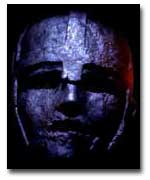 |
| Iron mask |
What is isinglass?
 |
| isinglass sheet |
Subscribe to:
Posts (Atom)
